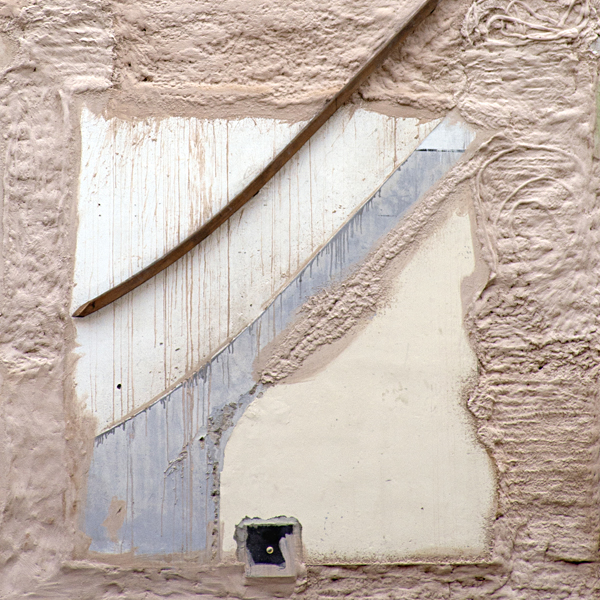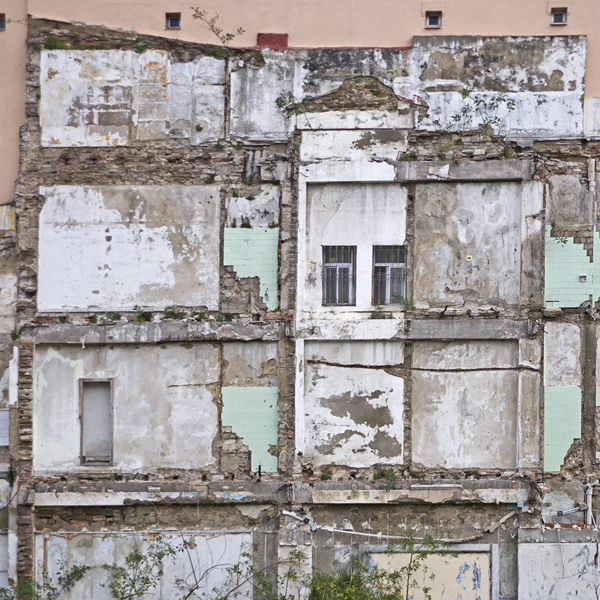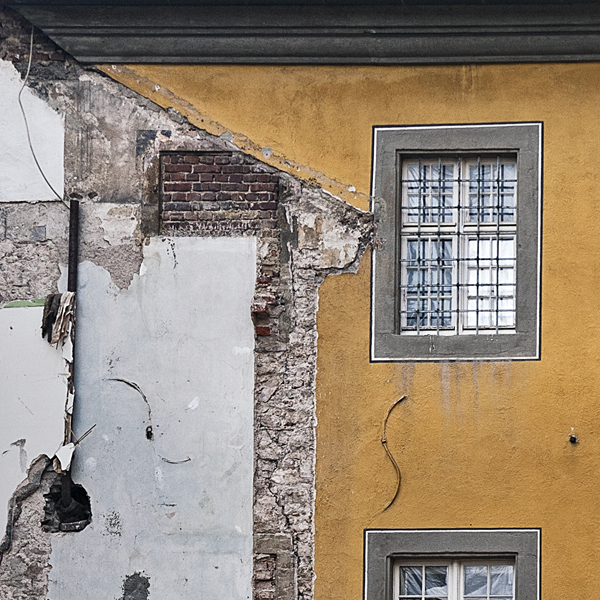The roof of a smaller house is imprinted on the outer wall of its larger neighbour before being enlarged to create uniformity in a modernised town’s street; a banister is revealed hanging precariously on a second storey floor, its steps from another life having disappeared from this once familiar connecting space; wooden beams, belonging to a time when Europe was tree-rich, exposed, naked and reinforced by steel rods, awaiting rejuvenation within a modern apartment block; a patchwork quilt of walls, their bathroom tiles and flaking paint laying bare memories from the intimate spaces of the lives of the men, women and children who spent their formative years in a close domestic space.
High above street level, you’ll often catch these glimpses of lives lived in times past printed in the fabric of their exposed walls. These buildings are usually in a time of flux, undergoing a reconstruction or renovation programme, during which these artefacts will usually become buried under another layer of architecture.







